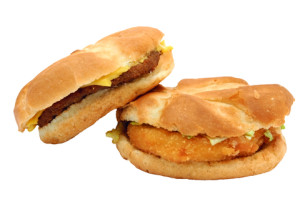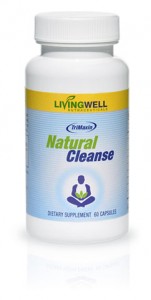 In 2012, the term “pink slime” became a household word. It refers to what the processed meat industry calls “lean finely textured beef” (LFTB), but what is really beef scraps and connective tissue treated with ammonia then added to ground beef.
In 2012, the term “pink slime” became a household word. It refers to what the processed meat industry calls “lean finely textured beef” (LFTB), but what is really beef scraps and connective tissue treated with ammonia then added to ground beef.
After it was widely publicized, many food companies removed it from their burgers … but now the product, which is made of trimming once only used in dog food, is reportedly making a comeback.[i]
And this is but one example of the unsavory … all right, the downright disgusting things lurking in many processed foods. Below I’ve compiled 13 more shocking and/or gross facts that will probably make you hate processed foods. At least, I hope it will.
Limiting processed foods in your diet is a key to staying healthy and pain free. Yet, these products are designed to lure you in and keep you coming back for more, more … more. Once you break free, you’ll have a hard time believing you ever regarded these largely synthetic, chemical-laden products as food … and, indeed, it could be argued that many processed foods aren’t really “food” at all.
13 Reasons to Hate Processed Food
13. Shellac: The shiny coating on jelly beans, candy corn and countless other candies is made from secretions of the lac bug. It’s often listed on labels as “confectioner’s glaze.”
12. Saltwater in Your Chicken: Many chicken manufacturers inject saltwater into the meat to increase its weight and enhance flavor – a lose-lose proposition for your sodium intake and your wallet (you’re paying how much for saltwater?).
11. Wood Pulp: If you see “cellulose” on a food label, it’s another word for wood pulp or cotton. Although it’s reportedly non-toxic, wood pulp is added to your food to add inflate fiber content and act as a cheap, no-calorie filler. Look for it in shredded cheese, salad dressing, ice cream and more.
10. Duck Feathers in Your Bread: L-cysteine, a dough softener often used in bread, bagels, cookie dough and more, is often made from duck feathers (and sometimes also from human hair!).[ii]
9. Antidepressants in Your Chicken: Aside from saltwater, when researchers from Johns Hopkins University tested chicken feathers (which accumulate various contaminants chickens have been exposed to), they found antidepressants, painkillers, allergy medications, banned antibiotics and even caffeine (which, sadly, is used to keep chickens awake so they eat more and get bigger, faster).[iii]
8. Sand: Sand, also known as silicon dioxide, is widely used to prevent clumping in foods like salt, soup and coffee creamer.
7. Titanium Dioxide: That sunscreen chemical that makes your nose turn white? It’s called titanium dioxide and it’s also added to food like salad dressing, creamer and icing to make them appear whiter. Too bad it’s also been potentially linked to cancer when consumed …[iv]
6. Bugs:Aphids, thrips, beetle eggs and/or sacs, larvae, mites, fly eggs, corn ear worms, corn borers … and maggots are just some examples of bugs that can (legally) exist in your food. For instance, canned mushrooms must contain an average of 20 or more maggots of any size per each 100 grams before the U.S. Food and Drug Administration (FDA) will take action against them. You’ll also find bugs known as cochineals, which are used to make cochineal extract, also known as carmine, are red dye used in everything from jams and juices to baked goods, candy and cake icing.
5. Rodent Hair, Sweat, Urine and Poop: Different foods are allowed to contain different amounts of hair and “excreta” (mammalian urine, feces and sweat). Macaroni and other noodle products must be contaminated with an average of 4.5 rodent hairs (or more) per 225 grams — for six or more samples — before the FDA considers it a problem. Pepper, on the other hand, can contain anything under an average of 1 mg of mammalian excreta per pound.
4. Calf Stomach in Your Cheese: Rennet, widely used for making cheese, is a group of enzymes that come from a calf’s stomach. As reported by Babble:[v] “Rennet for cheese making is obtained by slicing up a calf’s stomach, soaking it in whey and wine or vinegar, and then filtering it. Gross.”
3. Anal Secretions from Beavers: Castoreum is “the dried and macerated castor sac scent glands (and their secretions) from the male or female beaver.”[vi] These secretions have a lovely vanilla scent, which is why it’s sometimes used in natural vanilla flavoring.
2. Fish Bladder in Your Beer: Isinglass is a form of collagen widely used to brew beer (isinglass reacts with yeast to form clumps that sink to the bottom, allowing for a clearer product). Isinglass comes from the swim bladders of fish.[vii]
1. Meat ‘Slurry’: These are two words no one wants to hear in the same sentence, yet meat slurry, a liquefied meat product, is used to make many meat products, including the ever-popular chicken nugget.[viii]
Ready to Clear the Decades’ Worth of Trapped Toxins in Your Colon?
![]()
![]()
 Did you know that your colon could be clogged with five to 20 pounds of hardened fecal matter, composed of accumulated toxins from your processed-food diet? This clogging causes your gastrointestinal (GI) tract to become inflamed, which can cause leaky gut — a condition in which toxins leak into your bloodstream. This, in turn, causes inflammation that is linked to chronic disease, digestive dysfunction and poor health.
Did you know that your colon could be clogged with five to 20 pounds of hardened fecal matter, composed of accumulated toxins from your processed-food diet? This clogging causes your gastrointestinal (GI) tract to become inflamed, which can cause leaky gut — a condition in which toxins leak into your bloodstream. This, in turn, causes inflammation that is linked to chronic disease, digestive dysfunction and poor health.
You can help to flush impacted fecal matter and other toxins from your system by choosing a gentle detoxification system like Natural Cleanse. Unlike chemical laxatives or fad cleansing diets, which often contain harsh ingredients, Natural Cleanse combines the very latest research and clinical studies in digestive health with centuries of traditional healing wisdom into a natural product that gently releases and flushes toxins from your colon.
In just 2 capsules daily for 30 days, Natural Cleanse can help to flush your colon clear of toxic build up (including impacted fecal matter, toxins and other food additives, bacteria and parasites) while soothing the inflammation of your GI tract lining to reduce leaky gut. Natural Cleanse contains herbal remedies like buckthorn bark, ginger root, and milk thistle extract combined with psyllium husk and a patented probiotic blend that helps rebalance your vital gut microflora and is clinically proven to improve digestive function.
If you’re serious about detoxification, try this natural program that everyone is talking about. It’s fast, effective and, best of all, it’s entirely risk-free. Use an entire bottle, and if you’re not satisfied, send it back for a full refund.
[iii] Rodale News August 6, 2012
[iv] Babble 2012
[v] Babble 2012
[vi] Int J Toxicol. 2007 Jan-Feb;26(1):51-5.
[vii] ABC News July 23, 2012
[viii] Babble 2012

